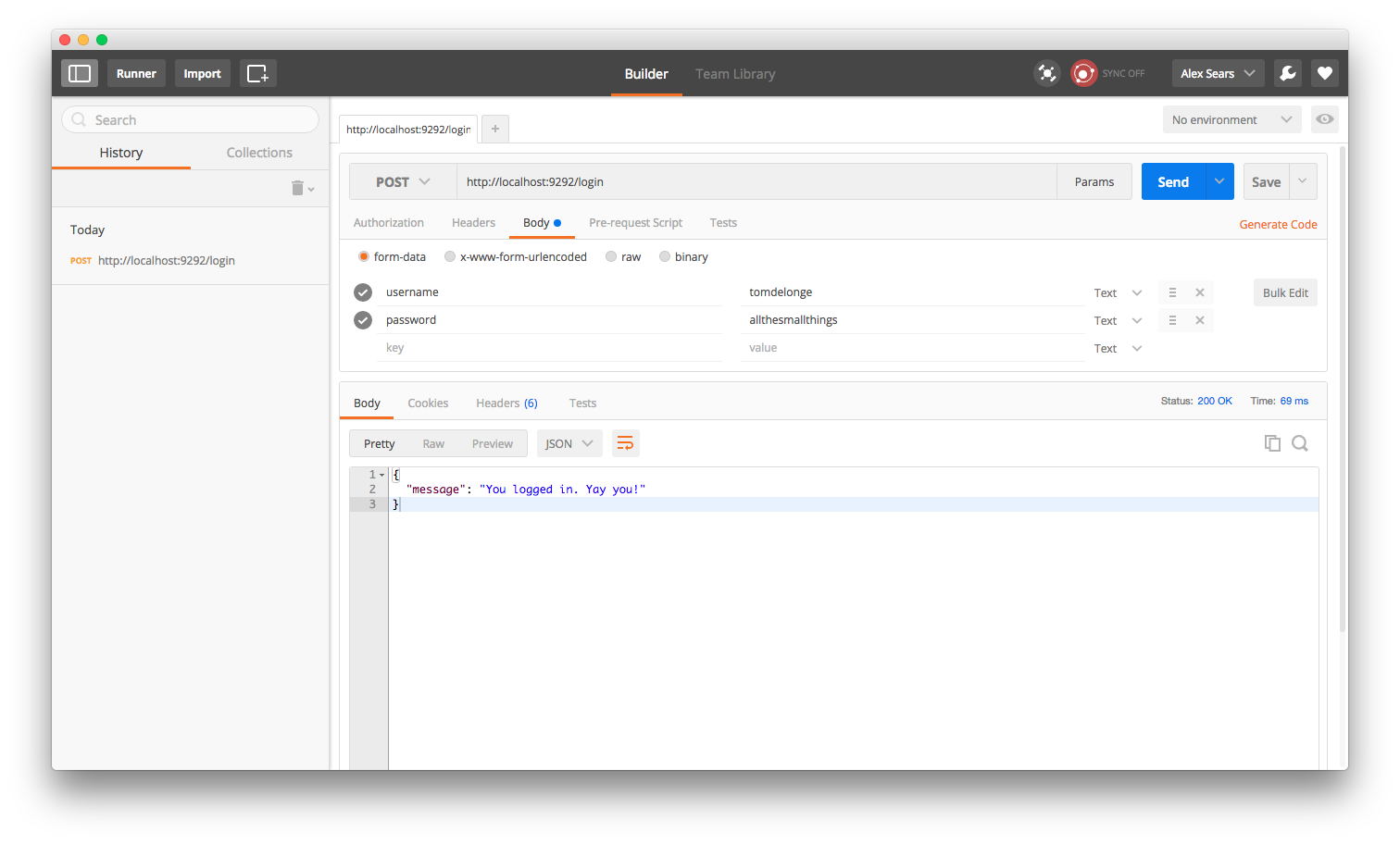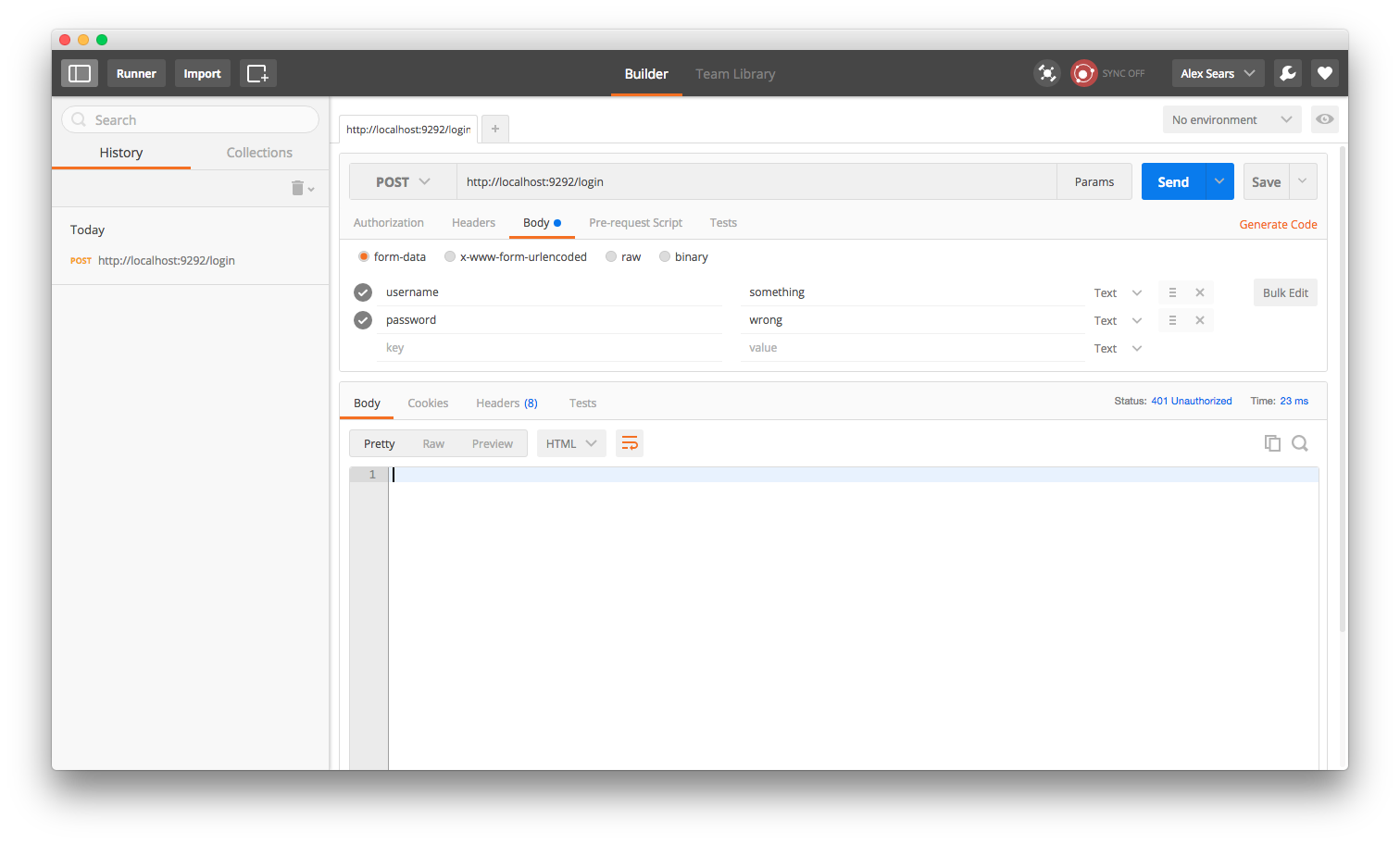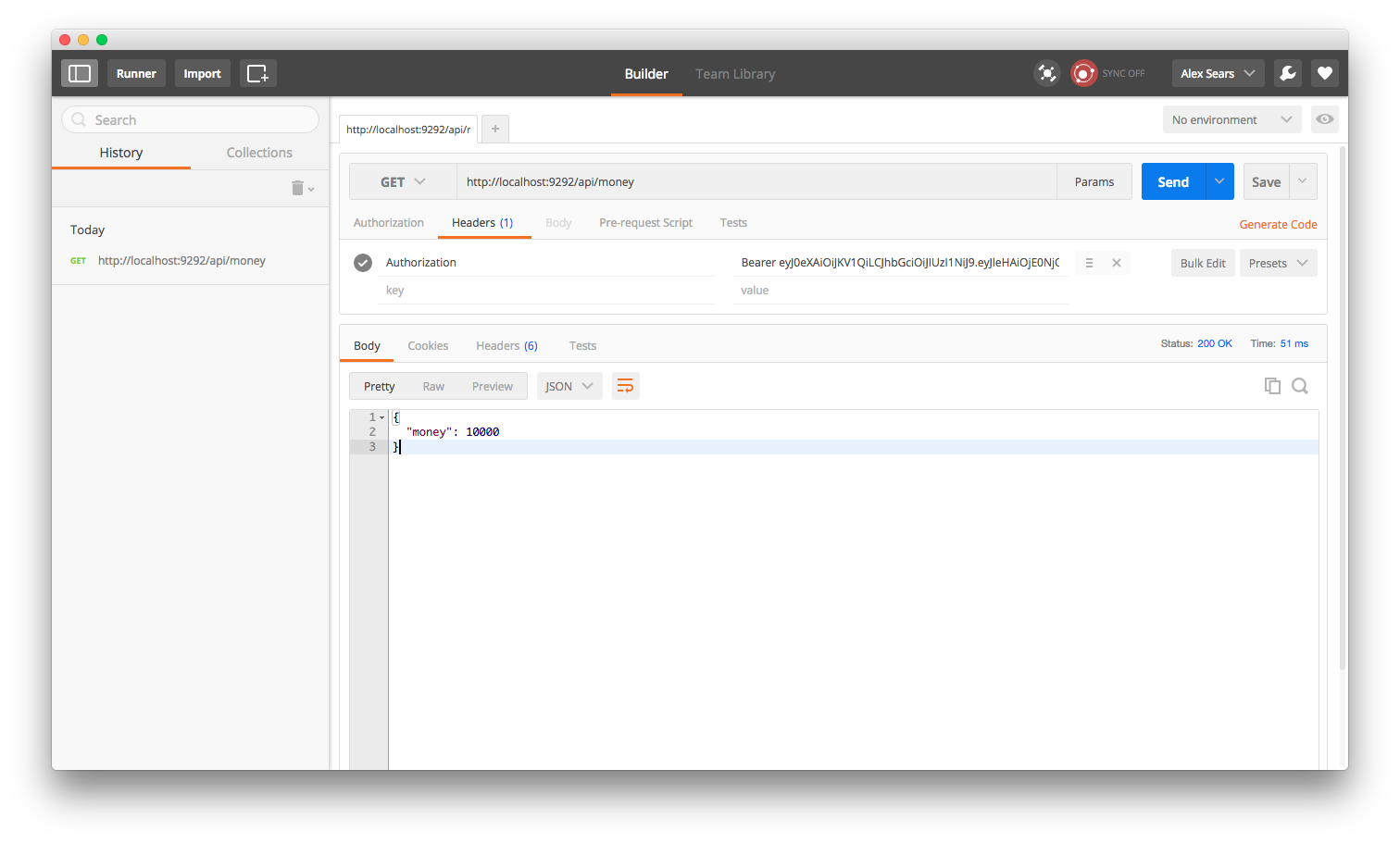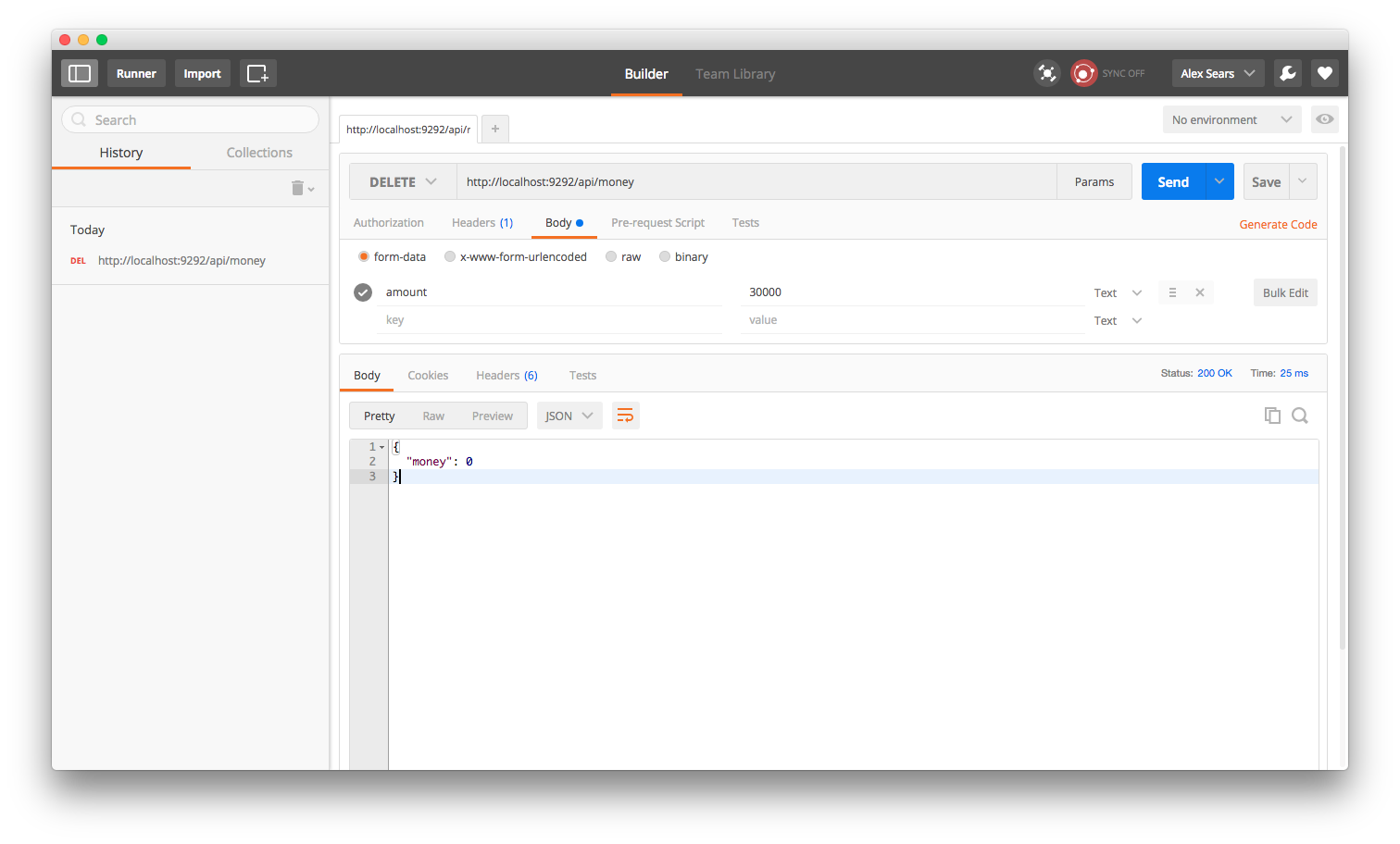Early on in my career, when I was a wee little junior dev, learning Ruby on Rails and looking to impress, I came across an issue that is all too common these days. How do I authenticate a request with an API when the consuming client is a browser? This is a problem that will need to be solved if you are building a single page application. At the time, I thought a single numeric "API token" that was returned to the user when they logged in was enough. Looking back, I realize how dumb of a move this was. It's extremely insecure!
Recently, I have been reading that JSON Web Tokens (also written as JWTs and pronounced "jots") are the way to go when authenticating with an API. If you haven't heard of JWTs, check out the website and read this blog post on using them with APIs. They make authenticating a user securely very easy.
Today, we are going to explore using JWTs in a Ruby environment, specifically with Rack apps. This includes Rails and Sinatra applications. Let's get to it! Create a new directory for this project and move into it.
mkdir ruby-jwt-api
cd ruby-jwt-apiFirst, let's setup the basic API itself. Create a Gemfile with the following in it.
source "https://rubygems.org"
gem 'sinatra'
gem 'jwt'
gem 'json'Then, run bundle. If you don't already have bundler installed, run gem install bundler. This will install the dependencies we need. Next we need to create our config.ru file to run our Sinatra application. Put the following in a file called config.ru.
require File.expand_path '../main.rb', __FILE__
run Rack::URLMap.new({
'/' => Public,
'/api' => Api
})Here we are loading a file called main.rb and then setting up a new Rack application and running it. We create the application this way so we can put our JWT protection on only the API routes and not the public routes. We are loading the file, but we haven't created it yet! Let's do that. Create a file called main.rb and put the following in it.
require 'json'
require 'jwt'
require 'sinatra/base'
class Api < Sinatra::Base
def initialize
super
@accounts = {
tomdelonge: 10000,
markhoppus: 50000,
travisbarker: 1000000000
}
end
get '/money' do
content_type :json
{ message: "Hello, World!" }.to_json
end
end
class Public < Sinatra::Base
def initialize
super
@logins = {
tomdelonge: 'allthesmallthings',
markhoppus: 'therockshow',
travisbarker: 'whatsmyageagain'
}
end
post '/login' do
username = params[:username]
password = params[:password]
if @logins[username.to_sym] == password
content_type :json
{ message: "You logged in. Yay you!" }.to_json
else
halt 401
end
end
endThis code sets up our two application routes. The only public route we have right now is /login. It authenticates a user based on a username and password. Currently, it just returns a confirmation message. This is where we will eventually return a JWT the user can use to authenticate with the API. The API only has one route for now also called /money. It returns a simple message now too. Notice, we have hardcoded the values for our users. Normally this would come from a database of some sort.
Run rackup on the command line to start the server. Here are what our responses look like if we hit each of these endpoints. We hit the login route and get a success...
...hit the login route and get an error...
...and hit the /api/money route to make sure our routing works correctly.
Now that we know our endpoints are working, let's add authentication and authorization using JWTs. We need to make sure that when we log our user in, we return a JWT so the user can use it to authenticate in the future.
post '/login' do
username = params[:username]
password = params[:password]
if @logins[username.to_sym] == password
content_type :json
{ token: token(username) }.to_json
else
halt 401
end
end
def token username
JWT.encode payload(username), ENV['JWT_SECRET'], 'HS256'
end
def payload username
{
exp: Time.now.to_i + 60 * 60,
iat: Time.now.to_i,
iss: ENV['JWT_ISSUER'],
scopes: ['add_money', 'remove_money', 'view_money'],
user: {
username: username
}
}
endLet's analyze this. We have changed what happens on a successful login. We set the content type to JSON and then return a Hash that has the token in it.
The token is generated by calling the token method and passing it the username. token uses the jwt gem to create an encoded JWT. It takes the payload, the secret, and the algorithm we want to use to sign the token. Our token method calls another method we created called payload which simply returns a Hash that contains all the data we want in our token payload.
Some things to note about the payload. It has an expiration date, which will be verified later. We also give it an issuer that we can verify later, a set of scopes that this token allows a user to do, and some data about our user. A sample response would look like this.
Restart your server. Make sure to pass the environment variables to it when you run it like so.
JWT_SECRET=someawesomesecret JWT_ISSUER=moneyapi.com rackupWe have our first token! Yay! Notice how I have passed two environment variables on the command line. It's a good practice to pass these sorts of values in environment variables to avoid hardcoding them in our source code. These variables are used when creating (and later validating) our tokens.
Now we need to create a piece of middleware that will validate our token and then add the scopes and user data from the token to the request environment. This will allow us to access this information in our API routes. Add the following to our main.rb file.
class JwtAuth
def initialize app
@app = app
end
def call env
begin
options = { algorithm: 'HS256', iss: ENV['JWT_ISSUER'] }
bearer = env.fetch('HTTP_AUTHORIZATION', '').slice(7..-1)
payload, header = JWT.decode bearer, ENV['JWT_SECRET'], true, options
env[:scopes] = payload['scopes']
env[:user] = payload['user']
@app.call env
rescue JWT::DecodeError
[401, { 'Content-Type' => 'text/plain' }, ['A token must be passed.']]
rescue JWT::ExpiredSignature
[403, { 'Content-Type' => 'text/plain' }, ['The token has expired.']]
rescue JWT::InvalidIssuerError
[403, { 'Content-Type' => 'text/plain' }, ['The token does not have a valid issuer.']]
rescue JWT::InvalidIatError
[403, { 'Content-Type' => 'text/plain' }, ['The token does not have a valid "issued at" time.']]
end
end
endThis is a simple Rack middleware setup. In the call method, we get the HTTP_AUTHORIZATION value out of the environment hash, which represents the Authorization header in the request. We use fetch so we get a string if HTTP_AUTHORIZATION doesn't exist and then use slice to prevent throwing an error if the string indexes we want don't exist. This will strip off the "Bearer: " part of the Authorization header. We then decode the JWT and add the scopes and user data to the environment hash. Lastly, we call the next part in our middleware stack and pass it our modified environment.
We have wrapped this code in a begin, rescue. This is because the jwt gem will throw different exceptions for each thing that may be wrong with it, such as the validation not passing. We catch each one and return a good error message for it.
Now that we have the data available on our request environment, let's use it in our API route.
class Api < Sinatra::Base
use JwtAuth
def initialize
super
@accounts = {
tomdelonge: 10000,
markhoppus: 50000,
travisbarker: 1000000000
}
end
get '/money' do
scopes, user = request.env.values_at :scopes, :user
username = user['username'].to_sym
if scopes.include?('view_money') && @accounts.has_key?(username)
content_type :json
{ money: @accounts[username] }.to_json
else
halt 403
end
end
endHere, we initialize the class with some data, like we did with the Public class. Notice we use JwtAuth in this class. This is our way of including our token authentication middleware. This causes it to be run before the routes on this class are run. We then setup a /money route. This route grabs the scopes and user out of the environment. It then gets the username out of the user data. It checks to make sure this token has the view_money scope and that the username is a valid one in the data we have. If all this checks out, it returns the amount of money in the account. That's all there is to it.
We can use this same setup to add and remove money from these accounts.
post '/money' do
scopes, user = request.env.values_at :scopes, :user
username = user['username'].to_sym
if scopes.include?('add_money') && @accounts.has_key?(username)
amount = request[:amount]
@accounts[username] += amount.to_i
content_type :json
{ money: @accounts[username] }.to_json
else
halt 403
end
end
delete '/money' do
scopes, user = request.env.values_at :scopes, :user
username = user['username'].to_sym
if scopes.include?('remove_money') && @accounts.has_key?(username)
amount = request[:amount]
@accounts[username] -= amount.to_i
if @accounts[username] < 0
@accounts[username] = 0
end
content_type :json
{ money: @accounts[username] }.to_json
else
halt 403
end
endHere we are doing similar work as the previous route except we are sending POST and DELETE requests to add and remove money. Our output would look like this when adding money...
...and when removing money.
As you can see, we can now use JWTs to add and remove money also. You may have noticed that we have some duplicated code here though. That's not good when we can prevent it! Luckily, we can. We can refactor our code like so.
get '/money' do
process_request request, 'view_money' do |req, username|
content_type :json
{ money: @accounts[username] }.to_json
end
end
post '/money' do
process_request request, 'add_money' do |req, username|
amount = req[:amount]
@accounts[username] += amount.to_i
content_type :json
{ money: @accounts[username] }.to_json
end
end
delete '/money' do
process_request request, 'remove_money' do |req, username|
amount = request[:amount]
@accounts[username] -= amount.to_i
if @accounts[username] < 0
@accounts[username] = 0
end
content_type :json
{ money: @accounts[username] }.to_json
end
end
def process_request req, scope
scopes, user = req.env.values_at :scopes, :user
username = user['username'].to_sym
if scopes.include?(scope) && @accounts.has_key?(username)
yield req, username
else
halt 403
end
endWe have extracted the common code out into its own method and pass in the functionality for each route into the process_request method as a block.
That's all there is to it. We can now use our JwtAuth middleware anywhere we want to protect routes with JSON web tokens.
What about Auth0?
Auth0 handles all this business of authenticating your users and creating JWTs so you can concentrate on building your application. There's even a gem that makes interacting with the Auth0 API so much easier. Let them handle the boring authentication while you build the next MyFaceTwiSterGram.
Wanna integrate Auth0 with RoR? Simple. The excellent writers over at Auth0 have you covered. They have written extensive documentation on how to do just that. It goes a little something like this.
Add Omniauth and Auth0's strategy
Add the following to your Gemfile and run bundle install.
gem 'omniauth', '~> 1.3'
gem 'omniauth-auth0', '~> 1.4'Initialize Omniauth
Put the following in a file at config/initializers/auth0.rb, replacing the ALL_CAPS values with their actual values received when creating an application on the Auth0 dashboard.
Rails.application.config.middleware.use OmniAuth::Builder do
provider(
:auth0,
'YOUR_CLIENT_ID',
'YOUR_CLIENT_SECRET',
'YOUR_NAMESPACE',
callback_path: "/auth/auth0/callback"
)
endAdd the callback handler for Auth0
Use this command to create a controller to handle the Auth0 callback.
rails generate controller auth0 callback failure --skip-template-engine --skip-assetsIn this newly-created file, add the logic to handle the success and failure of the callback.
class Auth0Controller < ApplicationController
def callback
# This stores all the user information that came from Auth0
# and the IdP
session[:userinfo] = request.env['omniauth.auth']
# Redirect to the URL you want after successfull auth
redirect_to '/dashboard'
end
def failure
# show a failure page or redirect to an error page
@error_msg = request.params['message']
end
endAlso, replace the routes we created earlier with the following ones instead.
get "/auth/auth0/callback" => "auth0#callback"
get "/auth/failure" => "auth0#failure"Add the callback to Auth0's dashboard
You need to make sure you add the callback URL to the Application Settings in the Auth0 dashboard area.
For example, the callbacks we have created will be reached at http://yourUrl/auth/auth0/callback.
Pick a method of triggering the login
There are multiple ways you can trigger the login flow in your application. For example, you could use the Auth0 Lock widget, Passwordless, or some custom UI. Here is what the code would look like to use the Lock widget in modal form.
<script src=“https://cdn.auth0.com/js/lock/10.0/lock.min.js"></script> <script type="text/javascript"> var lock = new Auth0Lock('YOUR_CLIENT_ID', 'YOUR_NAMESPACE'); function signin() { lock.show({ callbackURL: '', responseType: 'code', authParams: { scope: 'openid email' // Learn about scopes: https://auth0.com/docs/scopes } }); } </script> <button onclick="window.signin();">Login</button>
Accessing User Info
Once all this is setup, you can access user information like you normally would when using the Omniauth gem and its provider gems.
class DashboardController < SecuredController def show @user = session[:userinfo] end end
<div> <img class="avatar" src="<%= @user[:info][:image] %/>"/> <h2>Welcome <%= @user[:info][:name] %></h2> </div>
This is only a portion of the information you can get from their docs. Head over there to get more information on integrating with Rails.
Authentication is hard
Authentication in a web application can be difficult. However, whether you use Auth0 or roll your own solution, the jwt ruby gem offers a simple way to use JWTs in your ruby application. This allows stateless authentication that can be used in a traditional application or a decentralized API.
“Authentication in a web application can be difficult. However, Auth0 simplifies it with JWTs.”
Tweet This









